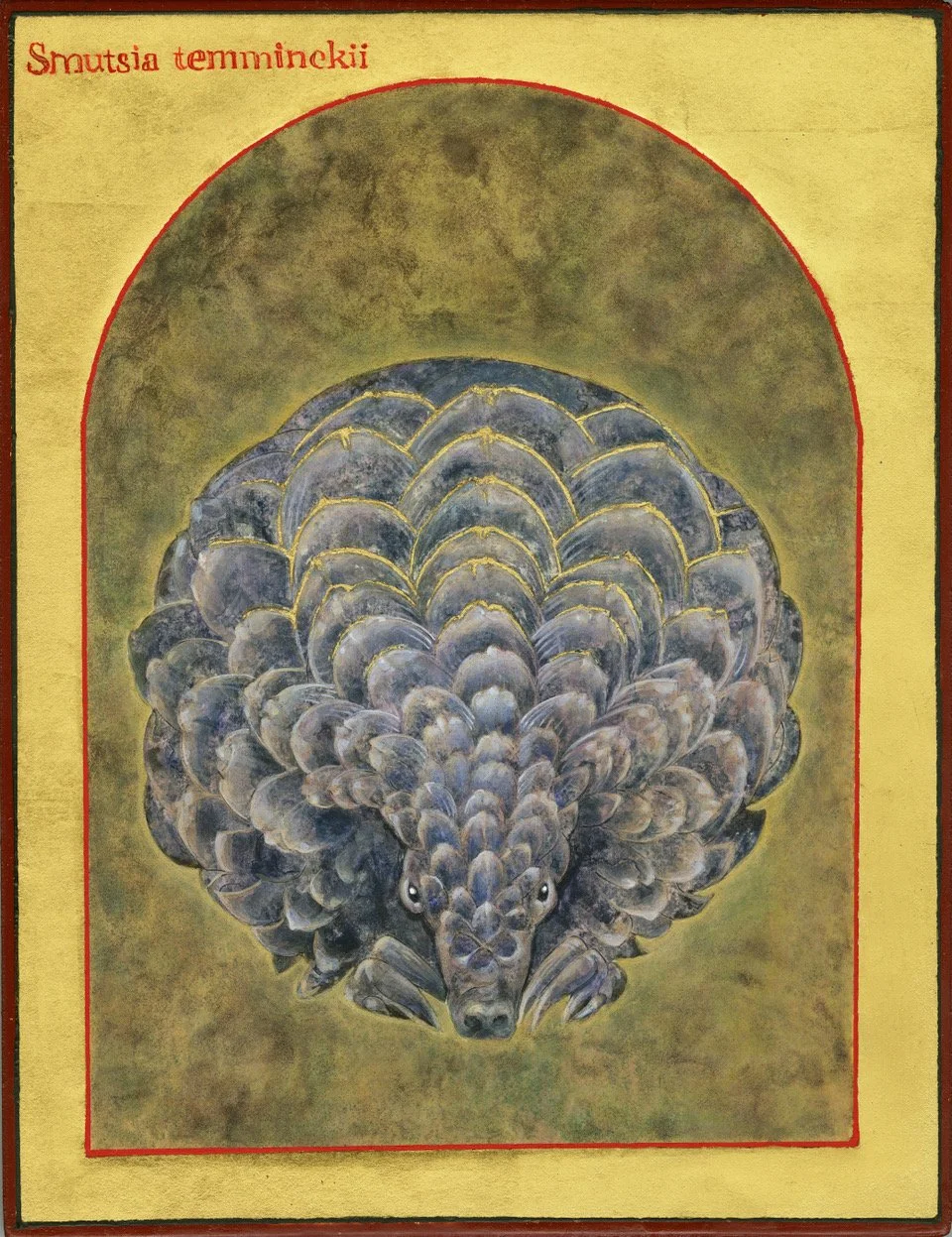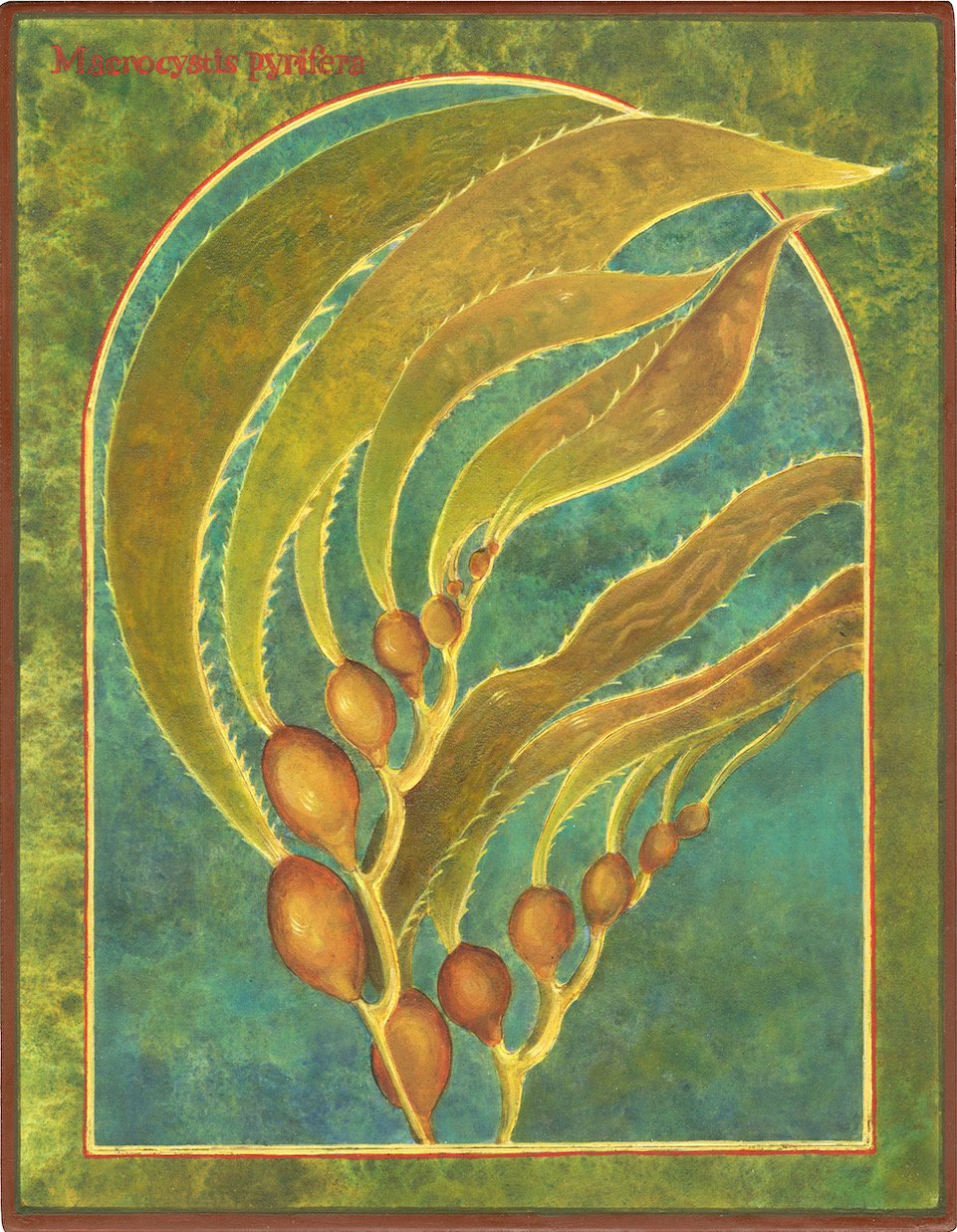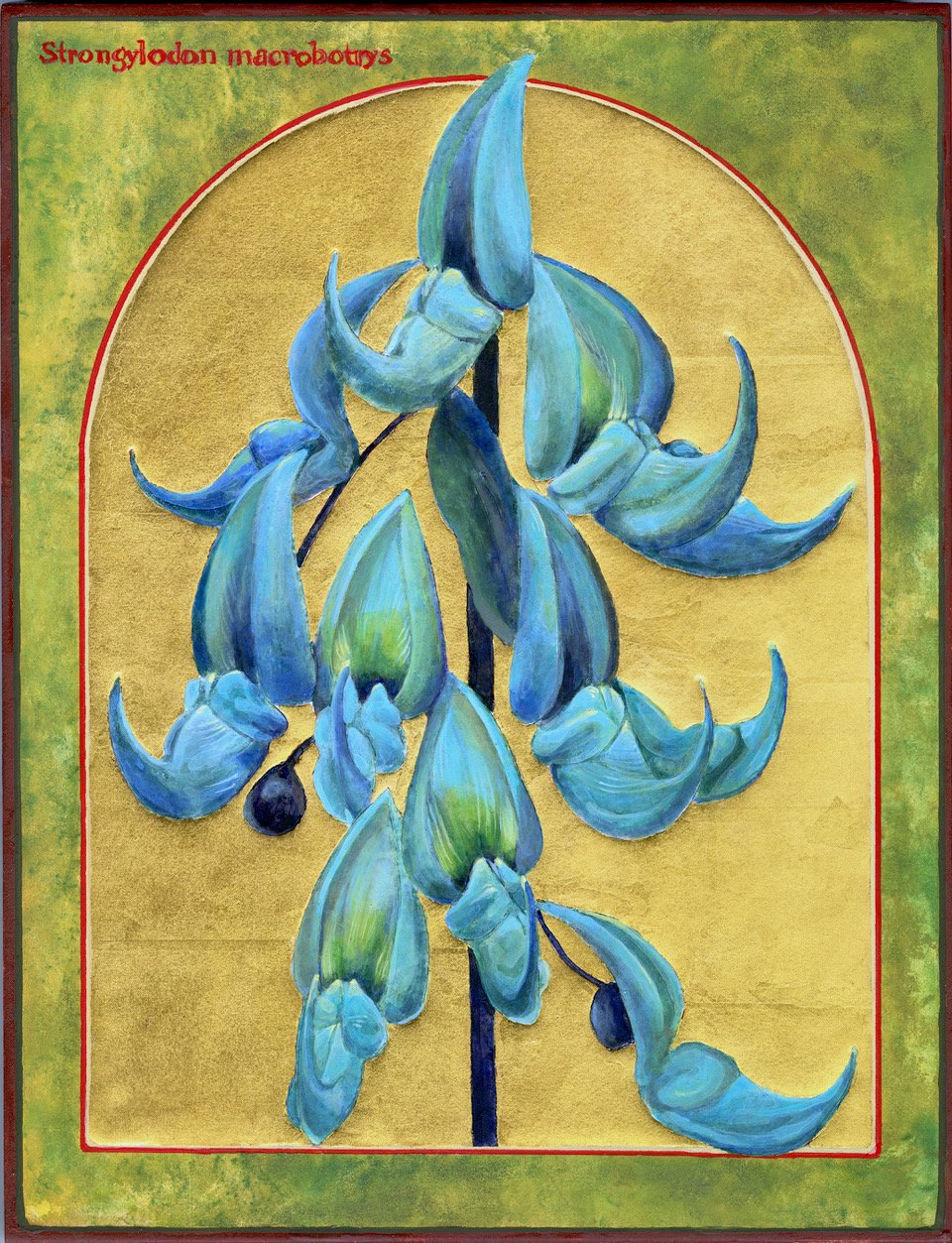“In her remarkable animal portraits, Angela Manno has found a way to combine exactitude with meaning in the faces of her subjects, no less than if they were in Nature’s studio looking out to the friendly observer.”
— Edward O. Wilson, conservation biologist, author of Half Earth: Our Planet’s Fight for Life
Contemporary Icons of Threatened and Endangered Species
Applying the traditional processes of icon painting to contemporary environmental concerns, Endangered Species aims to elevate non-human species to their rightful and equal place in the community of being.
Most of the fauna and flora depicted are threatened or critically endangered. The extinction rate is currently hundreds, perhaps thousands of times higher than the natural rate, causing what is considered to be the sixth mass extinction. Based on these statistics, biologist E.O. Wilson estimates that if current trends continue, half of Earth's animal and plant species will be extinct by the end of this century.
It is clear that the Western mind is divorced from Nature, the primary condition that has led to the current ecological catastrophe. I feel that the only way back - indeed our own survival - depends on nothing less than a re-enchantment with the Earth as a living reality. It is for this reason that I have chosen to depict non-human species in a traditionally religious form: the icon.
These contemporary icons represent the confluence of my search for a form of expression that merges my art, scientific understanding and mystical sensibilities with the current zeitgeist which is turning more and more towards ecology, given the concern over the biosphere and climate disruption.
The Earthly Paradise
“Angela Manno's recovery of the classical mystical tradition through icon painting and projection into the future with her images of the Earth from space is a profoundly creative and spiritual interpretation of our present situation. This image of the Earth from space is our new icon.”
— Dr. Ewert Cousins, professor of theology, Fordham University; former president, American Teilhard Association
The first of her contemporary icons, The Earthly Paradise represents Manno’s departure from the traditional canon of iconographic images, choosing instead to elevate the Earth to the status of an icon.
“Because of my understanding of ecology, all of us are derivative of the Earth, and there was no icon of it. Everything came together in that icon. Not only the physical planet, which is represented by the globe and the physical atmosphere, but outside it is a halo of gold and rays, which represent the Holy Spirit in traditional iconography."
The result is a contemporary icon in which we see “the Earth having come into its fullness as a bio-spiritual entity."
The Earthly Paradise: Icon of the Third Millennium | Egg Tempera & Gold Leaf on Wood | 13" x 13" x 1”
Traditional
Angela Manno’s method of iconography stems from the tradition originating in the monasteries of 14th - 16th century Russia. She was trained by master iconographer Vladislav Andrejev in an ascetic process which he developed specifically for the modern mind. Manno has maintained this practice stemming from the ancient liturgical art of Byzantine-Russian iconography for more than twenty years.
Though the icon is at the very foundation of Western art, it is distinct from the religious and secular art that grew in the West both in terms of its function and development. The icon itself is an expression, in symbolic form, of the teachings of the saints, ascetics, and leaders in the Church throughout the centuries. The imagery and processes are thus not attributed to the individual genius of the artist, as is the case in Western art, but to this ancient lineage. When done according to the canon (a special set of rules governing spiritual practice and icon painting techniques), each stage, from gessoing the board to applying the final olifa (oil sealant), has a precise liturgical meaning.
Each personage or scene depicted in an icon has principles and virtues associated with it. The icon itself is used by individuals as an aid in prayer and meditation and is an integral part of the Eastern Orthodox liturgy.







































